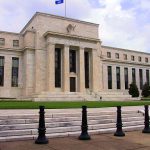Tomorrow the Federal Reserve is widely expected to announce another round of quantitative easing (QE3) in an attempt to stimulate the economy. QE is a way for the Fed to encourage lending by influencing long-term interest rates when short-term rates – its normal mechanism for steering the economy – are already at or near zero.(a) However, new evidence from the latest Duke University/CFO Magazine Global Business Outlook survey of corporate leaders suggests that QE3 will have little impact on private investment, the key driver of economic growth.1
In my previous article on QE3, I outlined evidence from the June Duke/CFO survey indicating that small changes in the interest rate are unlikely to stimulate corporate investment. This finding is further supported by our new survey of 887 CFOs, the results of which were released yesterday. We asked CFOs a number of questions to determine the sensitivity of capital spending to changes in interest rates. In typical economic circumstances, there is a negative relationship between interest rates and capital investment (lower interest rates mean higher investment). However, our current economic environment is not ‘typical’ nor reflective of a historical average.(b)
Our survey results suggest that, in today’s economic environment, planned capital investment is insensitive to rate changes. Our survey directly addressed the possible stimulative effect of interest rate decreases by asking CFOs, “By how much would your borrowing costs have to decrease to cause you to initiate, accelerate or increase investment projects in the next year?” Six hundred sixty seven CFOs responded to the question. Given a 50 basis point (0.5 percentage point) reduction in borrowing costs, only 3.0% would initiate, accelerate, or increase investment.(c) A 100 basis point (1 percentage point) decrease in costs – which would be an extraordinarily optimistic outcome of QE3 – would only lead an additional 5.7% of CFOs to increase investment. In the current environment, investment is not impacted by interest rate decreases.2
To address the possibility that some of the respondents had no investment plans to begin with, we asked a separate question to isolate only those who already planned to invest in the coming year. We then recalculated the above sensitivities. For those CFOs who will be investing, a decrease in rates of 50 basis points would lead only 2.0% to initiate, accelerate, or increase investment. Conversely, an increase in rates of 50 basis points would cause only 5.3% to delay or abandon planned investments.
Written responses from the CFOs emphasize that interest rates are not a major factor influencing their current investment decisions. The CFOs told us:
“Rates are already at historic lows, so lower rates would not impact our decision.”
“We need to see reliable growth before we are willing to invest any further.”
“The interest rate will not fluctuate that great[ly] to influence our decisions in this area. We already have exceptionally low financing available to us. Our weighted average interest rate on debt is currently the lowest in our history.”
“Borrowing costs don’t drive our investment decisions unless they rise dramatically.”
“Interest rates [are] already at historic lows. It’s not high interest rates that are holding us back, but uncertainty about federal policies and loss of financial wealth of our customers.”
Both the September and June Duke/CFO surveys provide convincing evidence that, in our current economic climate, capital investment is remarkably insensitive to both increases and decreases in interest rates. Investment hurdle rates – the rate of return a company would need to expect in order to commit to a project or investment – are very high due to economic uncertainty (which translates to increased risk).(d) Furthermore, these hurdle rates already incorporate contingencies for interest rate changes of plus or minus 100 basis points.
The bottom line is grim for the prospects of additional quantitative easing being successful. Rates are already at 50-year historical lows. Many observers have noticed the diminished impacts of each non-conventional intervention by the Fed since the first round of QE. Our surveys show that even an optimistic outcome – a 50 basis point reduction in rates – would have little measurable impact on corporate spending. Furthermore, it is possible that the speculation about QE3 (or QE4) generates additional uncertainty, which has a negative impact on capital investment.
Endnotes
- The Duke University/CFO Magazine Global Business Outlook survey has been conducted quarterly for the past sixteen years. The findings in this article come from the latest survey, completed September 7, 2012, with nearly 1500 CFOs from across the globe, including 887 from the U.S.
- We asked a mirror question about whether interest rate increases would cause companies to delay or cancel planned projects. Given a 50 basis point increase in rates, only 5.4% of CFOs would delay or cancel their investments. A 100 basis point increase in rates would lead an additional 8.6% to consider delay or cancellation. The responses to this question support the finding that, in the current environment, investment is not responsive to modest or even substantial changes in interest rates.
Sidenotes
- (a) Quantitative easing involves the Fed buying up assets, typically Treasury bonds, thereby raising their price and reducing their long-term yield. This leads to lower long-term interest rates, which encourages banks to lend instead of keeping their money locked up in bonds.
- (b) One key advantage of our survey is that we can obtain information about expected behavior under the current circumstances. The typical historical analysis, on the other hand, averages outcomes across time and over a range of economic environments.
- (c) A basis point (bp) is equal to one-hundredth of a percentage point, or 1/10,000. 100 bp = 1%.
- (d) There are a number of unresolved issues with the potential to significantly affect the world economy: the European debt crisis; high unemployment in the U.S.; the slowdown of China’s economic growth; turmoil in Iran, Syria, and other parts of the Middle East; and massive government deficits in the U.S. and other nations.





